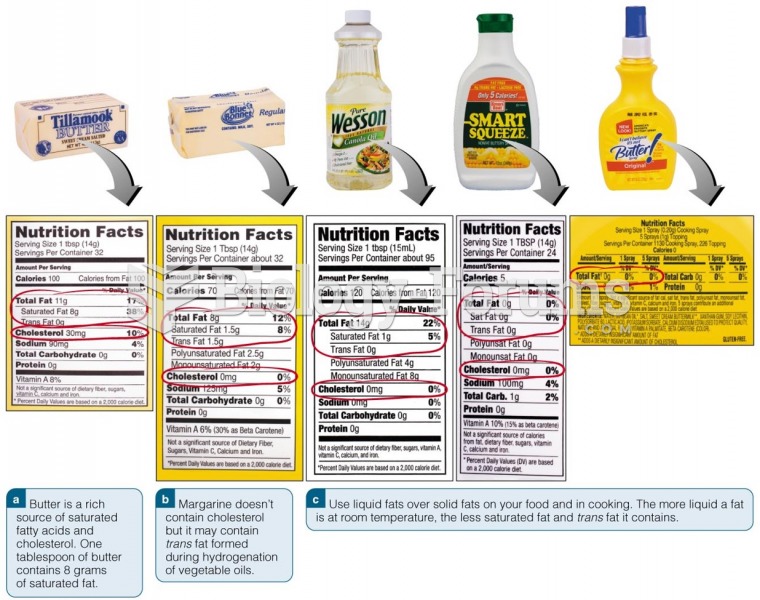Answer to Question 1
Nutrition labels typically include a gram amount and percent daily value of Dietary Fiber. These are listed in the Total Carbohydrate section. Starch- and fiber-rich foods will have higher values than non-fiber-rich foods. The FDA authorizes four health claims on food labels concerning fiber-rich carbohydrate foods. One is for fiber-containing grain products, fruits, and vegetables and reduced risk of cancer.. Another is for fruits, vegetables, and grain products that contain fiber, and reduced risk of coronary heart disease.. A third is for soluble fiber from whole oats and from psyllium seed husk and reduced risk of coronary heart disease, and a fourth is for whole grains and reduced risk of heart disease and certain cancers..
The DRI committee advises that carbohydrates should contribute about half (45 to 65 percent) of the energy requirement. A person consuming 2000 kcalories a day should therefore obtain 900 to 1300 kcalories' worth of carbohydrate, or between 225 and 325 grams. This amount is more than adequate to meet the RDA for carbohydrate, which is set at 130 grams per day based on the average minimum amount of glucose used by the brain. When it established the Daily Values that appear on food labels, the FDA used a guideline of 60 percent of kcalories in setting the Daily Value for carbohydrate at 300 grams per day. For most people, this means increasing total carbohydrate intake. To this end, the Dietary Guidelines for Americans encourage people to choose fiber-rich whole grains, vegetables, fruits, and legumes daily. Recommendations for fiber encourage the same foods just mentioned: whole grains, vegetables, fruits, and legumes, which also provide vitamins, minerals, and phytochemicals. The FDA set the Daily Value for fiber at 28 grams for a 2000-kcalorie intake. This is based on the DRI recommendation of 14 grams per 1000-kcalorie intakeroughly 25 to 35 grams of dietary fiber daily. These recommendations are almost two times higher than the usual intake in the United States. As health care professionals, you can advise your clients that an effective way to add dietary fiber while lowering fat is to substitute plant sources of proteins (legumes) for some of the animal sources of protein (meats and cheeses) in the diet. Another way to add fiber is to encourage clients to consume the recommended amounts of fruits and vegetables each day. People choosing high-fiber foods are wise to seek out a variety of fiber sources and to drink extra fluids to help the fiber do its job. Many foods provide fiber in varying amounts.
Answer to Question 2
a
 Campylobacter bacteria are found in most chicken meat. If chicken meat is not well cooked or raw mea
Campylobacter bacteria are found in most chicken meat. If chicken meat is not well cooked or raw mea
 Examples of USP labels Source: Courtesy of Novartis Pharmaceuticals Corporation and Mallinckrodt Pha
Examples of USP labels Source: Courtesy of Novartis Pharmaceuticals Corporation and Mallinckrodt Pha





